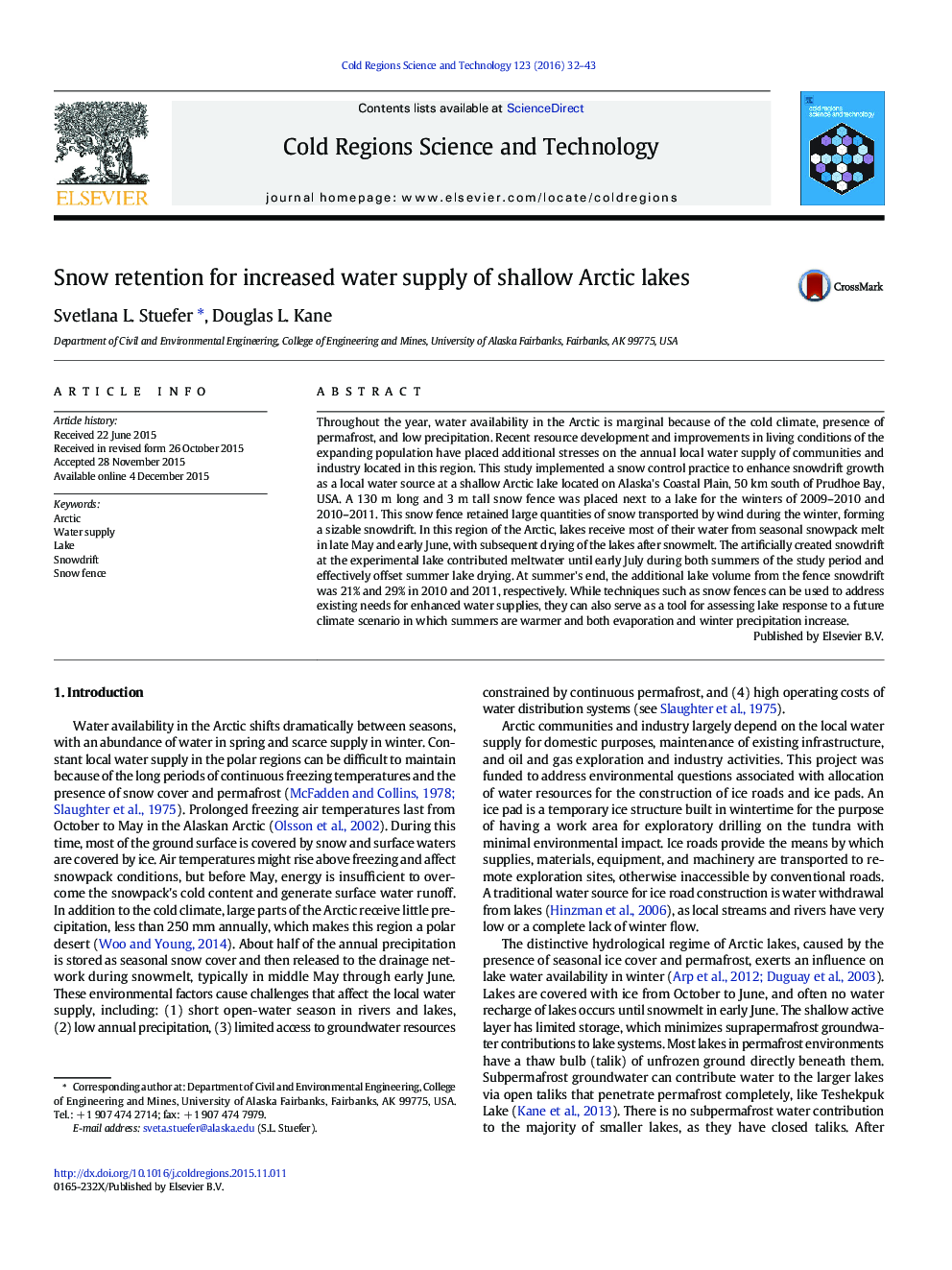| کد مقاله | کد نشریه | سال انتشار | مقاله انگلیسی | نسخه تمام متن |
|---|---|---|---|---|
| 6426597 | 1634441 | 2016 | 12 صفحه PDF | دانلود رایگان |
- At this site, annual precipitation averaged 202Â mm, with 62% of annual precipitation accumulating in the seasonal snowpack.
- Approximately half of the lake snowpack was deposited in the natural shoreline snowdrift.
- The artificially created snowdrift extended the snowmelt period from late May into early July.
- The large snowdrift next to a lake effectively offsets the P-E deficit, thus preventing drying of lake in the summer.
- Artificial snowdrifts are a reliable engineering alternative for increasing lake storage in cold regions.
Throughout the year, water availability in the Arctic is marginal because of the cold climate, presence of permafrost, and low precipitation. Recent resource development and improvements in living conditions of the expanding population have placed additional stresses on the annual local water supply of communities and industry located in this region. This study implemented a snow control practice to enhance snowdrift growth as a local water source at a shallow Arctic lake located on Alaska's Coastal Plain, 50Â km south of Prudhoe Bay, USA. A 130Â m long and 3Â m tall snow fence was placed next to a lake for the winters of 2009-2010 and 2010-2011. This snow fence retained large quantities of snow transported by wind during the winter, forming a sizable snowdrift. In this region of the Arctic, lakes receive most of their water from seasonal snowpack melt in late May and early June, with subsequent drying of the lakes after snowmelt. The artificially created snowdrift at the experimental lake contributed meltwater until early July during both summers of the study period and effectively offset summer lake drying. At summer's end, the additional lake volume from the fence snowdrift was 21% and 29% in 2010 and 2011, respectively. While techniques such as snow fences can be used to address existing needs for enhanced water supplies, they can also serve as a tool for assessing lake response to a future climate scenario in which summers are warmer and both evaporation and winter precipitation increase.
Journal: Cold Regions Science and Technology - Volume 123, March 2016, Pages 32-43
